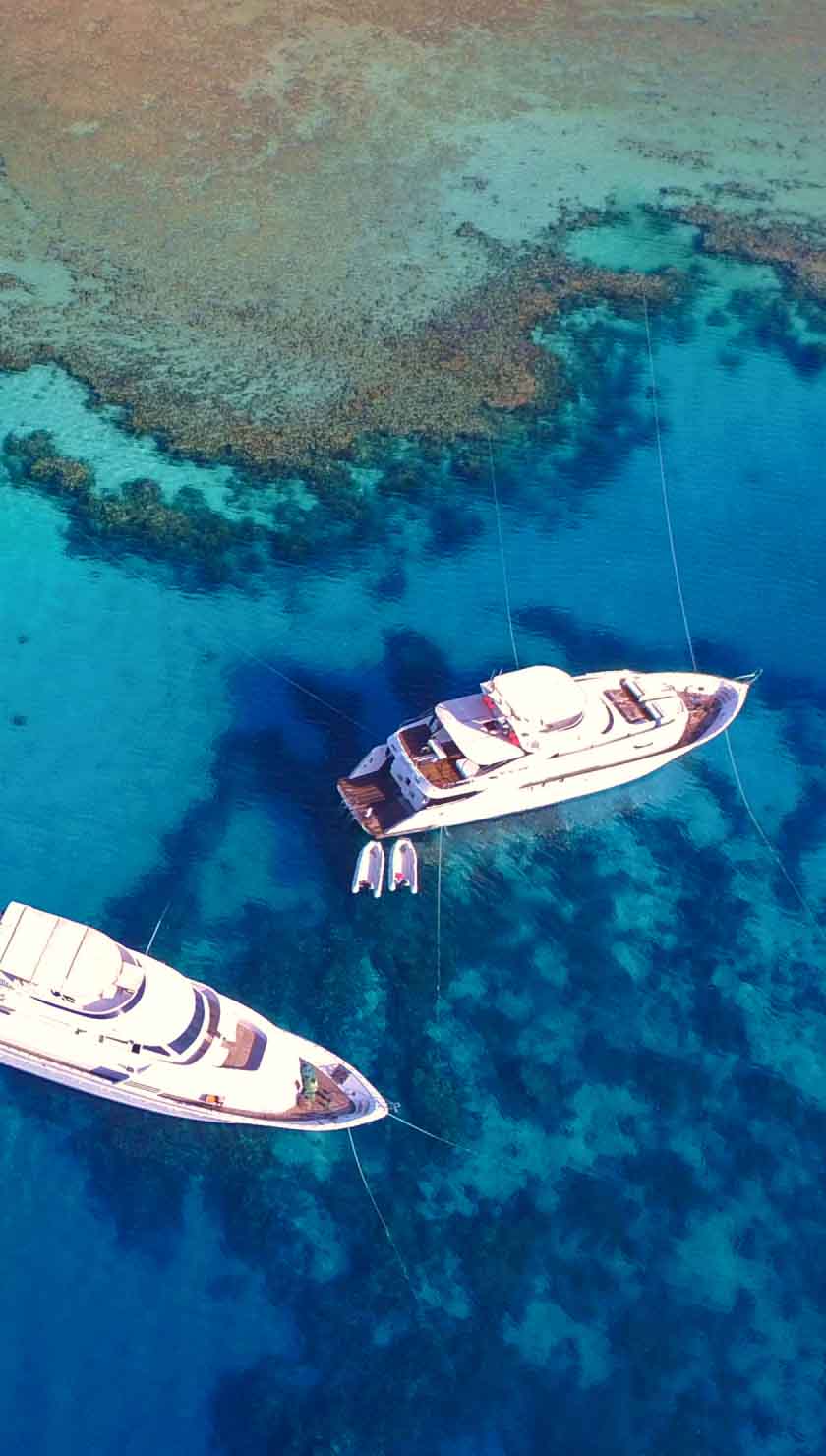Liveaboard Diving in Milne Bay
What To Expect On a Milne Bay Liveaboard
Liveaboards in Milne Bay explore the best of this sheltered, deep-water inlet, which has attracted scientists, missionaries, pearl traders, and Japanese and American warships throughout its history but is now a magnet for divers. Located in the remote southeast of Papua New Guinea, Milne Bay is considered by many to be the place that puts PNG on the international diving map. It has prolific marine diversity and spectacular underwater landscapes with its fair share of WWII wrecks.
Beyond its healthy reefs, deep walls, and coral gardens, diving in Milne Bay is renowned for its "muck diving." Liveaboard boats take divers to the perfect spots to uncover all kinds of weird yet beautiful critters amongst the silt, sand, and rubble of the sea bottom.
Milne Bay Underwater
Liveaboard diving in Milne Bay is like entering into a subaquatic Garden of Eden, filled with many unique and ostentatious creatures that are sought-after by underwater photographers. Hiding in broad daylight among the black volcanic sand, divers can enjoy all kinds of bizarre critters, such as the shape and color-shifting antics of a mimic octopus, considered one of the most intelligent species under the sea, or an adorable pygmy seahorse clinging to gorgonian sea fans in the gentle surge. As the sun sets over the Pacific, keep your eyes open for a stripy Wunderpus octopus coming out to hunt.
Shallow bays protected by outlying reefs are home to Wobbegongs, also known as carpet sharks and dugongs. Meanwhile, out on the reefs and walls, frogfish blend into the corals, as scalloped hammerhead sharks, Manta Rays, and sometimes even Whale Sharks and minke whales can be seen. And no diving in Milne Bay would be complete without checking out one of the WWII wrecks.
Dive Sites Of Milne Bay
The first day of liveaboard diving in Milne Bay is often at the wreck of the Muscoota. Visible from the surface, the wreck of this 1888, 4-masted British Royal Navy Clipper sits encrusted in sponges and soft corals in Discovery Bay.
No Milne Bay Liveaboard diving adventure would be complete without a visit to the isolated Dinah's Beach, where the beguiling and addictive world of "muck diving" is supposed to have begun. The black sand beach slopes down into the depths at about 30 degrees, but the best stuff is to be found exploring the shallows.
Diving on the north coast of the bay at Lauadi offers another iconic PNG muck-diving site packed with sea life between 2 and 15 meters (5 - 50 feet), home to a constantly changing cast of critters along with the seasons.
Only accessible by boat, nearby Deacon's Reef proves that Milne Bay diving is not just about spotting the cryptic in the volcanic silt. Here, reef species, sharks, and rays play among splendid coral gardens of cabbage corals and green tube coral trees that grow on an undersea cliff in just 12 meters (40 feet) of water in the shadow of the rainforest canopy overhead.
The only way to experience the wonder of the Manta ray cleaning station at Gonu Bara Bara, or Giants@Home as it has been named, is with liveaboard diving. In the middle of the southern China straits, the single coral bommie that rises 15 meters/50 feet from the seafloor is one of the most reliable places in Papua New Guinea to observe and get more closely acquainted with these majestic creatures.
Perhaps Milne Bay's most well-known wreck dive is the B-17 "Black Jack" Bomber. It lies undisturbed in deep water at the bottom of an abundantly populated reef wall.
Top Tips For Divers
- Unlike the rest of Papua New Guinea, January to April is considered the prime time for diving in Milne Bay, the wet season in the rest of the country. Still, any time of year is a good time for a dive cruise in this area.
- Average water temperatures range from 24-29C/75-84F, so don't waste packing space with think wetsuits when a rashguard or a 2-3mm summer suit will do.
- Out of the water, you won't need many layers on liveaboard boats in Milne Bay, as coastal temperatures are typically as warm as the water.
- For muck diving, even more than on the reefs, it's best to stay shallow and move at a snail's pace to spot the best the murky sand offers.
Getting To Milne Bay
With few roads, cliffs, and secluded coves, the best way to get the most out of diving in Milne Bay is on a Papua New Guinea liveaboard trip. Your departure point is the provincial capital, Alotau, built on the hillsides of the northern shore, which can be reached by a short connecting flight from the international airport in Port Moresby to Gurney Airport (GUR) in Alotau.











